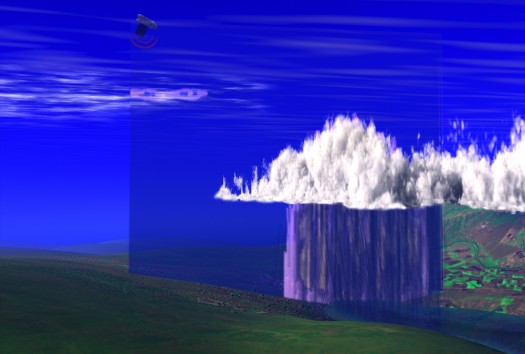The Planet in the Machine
November 2006By By Diane K. Fisher and Tony Phillips
By Diane K. Fisher and Tony Phillips;>> Macro menumgr_macro_spaceplaceimage not found <<
Now imagine millions of butterflies flapping their wings. And flies and crickets and birds. Now you understand why weather is so complex.All kidding aside, insects are not in control. The real “butterfly effect” is driven by, for example, global winds and ocean currents, polar ice (melting and freezing), clouds and rain, and blowing desert dust. All these things interact with one another in bewilderingly complicated ways.
And then there’s the human race. If a butterfly can cause a tornado, what can humans cause with their boundlessly reckless disturbances of initial conditions?
Understanding how it all fits together is a relatively new field called Earth system science. Earth system scientists work on building and fine-tuning mathematical models (computer programs) that describe the complex inter-relationships of Earth’s carbon, water, energy, and trace gases as they are exchanged between the terrestrial biosphere and the atmosphere. Ultimately, they hope to understand Earth as an integrated system, and model changes in climate over the next 50-100 years. The better the models, the more accurate and detailed will be the image in the crystal ball.
NASA’s Earth System Science program provides real-world data for these models via a swarm of Earth-observing satellites. The satellites, which go by names like Terra and Aqua, keep an eye on Earth’s land, biosphere, atmosphere, clouds, ice, and oceans. The data they collect are crucial to the modeling efforts.
Some models aim to predict short-term effects—in other words, weather. They may become part of severe weather warning systems and actually save lives. Other models aim to predict long-term effects—or climate. But, long-term predictions are much more difficult and much less likely to be believed by the general population, since only time can actually prove or disprove their validity. After all, small errors become large errors as the model is left to run into the future. However, as the models are further validated with near- and longer-term data, and as different models converge on a common scenario, they become more and more trustworthy to show us the future while we can still do something about it—we hope.
For a listing and more information on each of NASA’s (and their partners’) Earth data-gathering missions, visit science.hq.nasa.gov/missions/earth.html. Kids can get an easy introduction to Earth system science and play Earthy word games at spaceplace.nasa.gov/en/kids/earth/wordfind .

CloudSat is one of the Earth observing satellites collecting data that will help develop and refine atmospheric circulation models and other types of weather and climate models. CloudSat’s unique radar system reads the vertical structure of clouds, including liquid water and ice content, and how clouds affect the distribution of the Sun’s energy in the atmosphere. See animation of this data simulation at www.nasa.gov/mission_pages/calipso/multimedia/cloud_calip_mm.html.
This article was provided by the Jet Propulsion Laboratory, California Institute of Technology, under a contract with the National Aeronautics and Space Administration.



